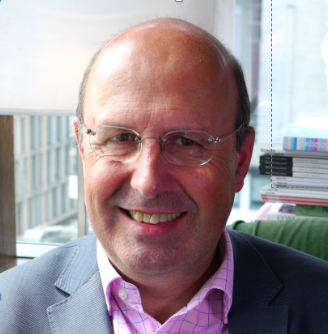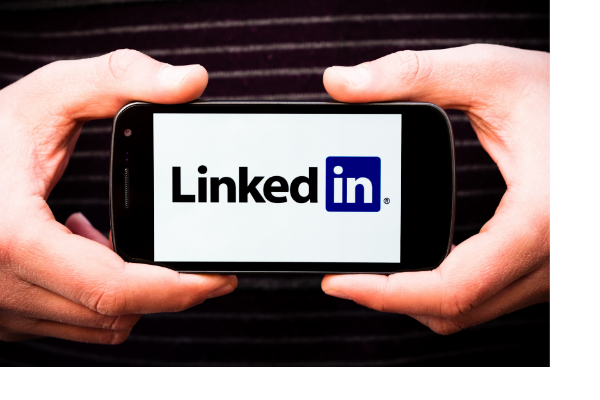You can sign up to our LinkedIn newsletter here
When I start working with people who want to build a Portfolio Executive workstyle, one of the key tools for them to develop their presence, build their reputation and find new clients is LinkedIn. But, before we can do any of those things, we need to spend some focussed time thinking through who they want to be known as on LinkedIn.
There are all sorts of options we can explore for getting your name out so you are noticed by more people whether it is to start building an influencer brand, participating in groups, posting articles or videos, getting endorsements or a multitude of other tactics. However, before any of these things, I encourage people to have a deep dive into who they want to be known as on LinkedIn. How are you going to show up on this platform? I would suggest there are three crucial things that are different in this new world.
Using LinkedIn to Create your Future
Often people have used LinkedIn as a way of recording their past successes. That’s fine. But now, you’re trying to create a future.
1 – Future Focussed
The first thing you need to do is shift your focus to a forward view of your future. It is less about your historical achievements, although they are important, more about building a narrative through your LinkedIn profile. This needs to make it absolutely clear that everything you have done so far has positioned you for the thing you are going to do next. This means you need to be very clear about the thing you’re going to do next. For example, you are going to move from being a senior marketing professional in a large corporate environment. Perhaps, in the past you’ve worked in an agency environment. Maybe, when you started out you didn’t do marketing but journalism. Perhaps, your degree was in economics. Your future focus is to become a Portfolio Marketing Director for a number of smaller businesses. Now you need to reposition everything that has happened so far in your life, your LinkedIn life, and show how this has positioned you for this future. Your economics degree means you understand the dynamics of the business world and that you are highly numerate. Your work in an agency means you understand how to manage creatives and engage with corporate customers. Your role in a large corporate means you have seen the role of marketing across all of the different organisation silos and how it needs to integrate with sales, service, product development and operations.
As important is to shift the presentation of your past to show how you can be an effective Portfolio Executive. As a Portfolio Executive you are primarily operating through influence. You are relying upon your knowledge, your skills and your experience. It is more about what you have learned through success and failure, how you have influenced the wider corporate environment and where you have built lasting capability. Flagship achievements like the launch of a product or the winning of awards count for less. You need to go back through each of your work experiences and make sure you tell your story in this new way.
People are less interested in the tasks that you have done they are more interested in what you have learnt through your experience, because that’s your currency now. Above all they are interested in the diversity of experiences that you have had with different kinds of organisations of different kind of scales because they’ve got to believe that you can translate from a big corporate environments into the SMEs you now want to working with.
Clearly in big corporate environments you work with smaller suppliers, you work with smaller partners, and you may in your earlier career may not have been working in big corporate environments, you may have worked in smaller businesses. Maybe in the corporate environment your clients are SMEs so you can demonstrate your understanding of that segment.
2 – Project your Personality
The second thing is you need to project your personality. People want to feel they know you at a glance. The traditional corporate speech that you see on a CV or a conventional LinkedIn profile doesn’t really help. I encourage people to write down 100 things about yourself, single one word or two-word phrases about yourself. Then go to friends and families, colleagues and say, “of these 100 things which do you think encapsulate me as the person that you know”. Make sure that it’s not just the things that you do, but who you are. Are you fun loving, or trusted, or serious, or an entrepreneur? What are the things that make you who you are, the ‘being’ part of you? What are the passions that motivate you? From those 100 things, as they start to pick out a top ten, you can start to put votes against them and you can create a word cloud. (Try https://www.wordclouds.co.uk). You can start to see a literal picture of those words where those that are most significant are larger and those that are less significant are smaller. Probably you want to pick the top 20, possibly top 25, for your word cloud.
Now, go back to your LinkedIn profile and very intentionally seed your profile with some of those words, which will show people who you are not just what you’ve done. They will get a feel for you just by reading the tone and the language of your LinkedIn profile. You want to attract people who are attracted to people like you. You will waste a lot of time if you are attracting people who are not attracted to people like you! A bare bones CV or LinkedIn profile won’t enable that rapport.
3 – Use Headlines and Summaries to show who you are
The third thing comes back to presenting a forward-facing view to the future. LinkedIn has two really useful parts of your profile. One is what I call the headline or tagline.
Immediately below your name you can put a small number of words that show who you are, that are associated with your name. If you look at mine it will say CEO and Executive Growth, and then there are a few words below my name that try to encapsulate what I stand for, what I’m about. Getting that pithy and distinctive can be crucial. Go and look at other LinkedIn profiles and see what you like and what you don’t like. There are lots of people out there who feel like used car salespeople. They are making big promises in that tagline. Perhaps as a professional that’s not the stance you want to take. But it is possible to do something that is distinctive to show what you care about and show a little bit more of who you are.
To just say ‘I run great marketing campaigns’ might not be the most compelling tagline.
The final thing is there is quite a large space where you can put a summary. My encouragement to you is to limit to a few words how you got to where you are today. Spend most of the space talking about what you are going to do for whoever engages with you. What are the results and the kind of the changes that they can expect from working with you? This is the whole future focus. There is lots of evidence in the more CV part of your profile where they can see your history so far. The summary is your promise for the future. You need to get this right before you start to engage with any kind of promotion of your LinkedIn profile, any commitment to influence, to write more articles, more posts.
Conclusions
Your LinkedIN profile has a fundamentally different purpose when you become a Portfolio Executive. It is no longer a CV to attract recruiters or a ‘calling card’ for networking in your industry or profession. Now it is a crucial part of your brand as a trusted advisor and Portfolio Executive to people you have never met. This requires fresh thinking and careful crafting. Make sure your LinkedIn profile is fit for purpose.
A Final Tip
One final tip, make sure your photo and the background behind your photo, match the promise that you want to make to those that reach out and connect.

Charles McLachlan is the founder of FuturePerfect and on a mission to transform the future of work and business. The Portfolio Executive programme is a new initiative to help executives build a sustainable and impactful second-half-career. Creating an alternative future takes imagination, design, organisation and many other thinking skills. Charles is happy to lend them to you.
